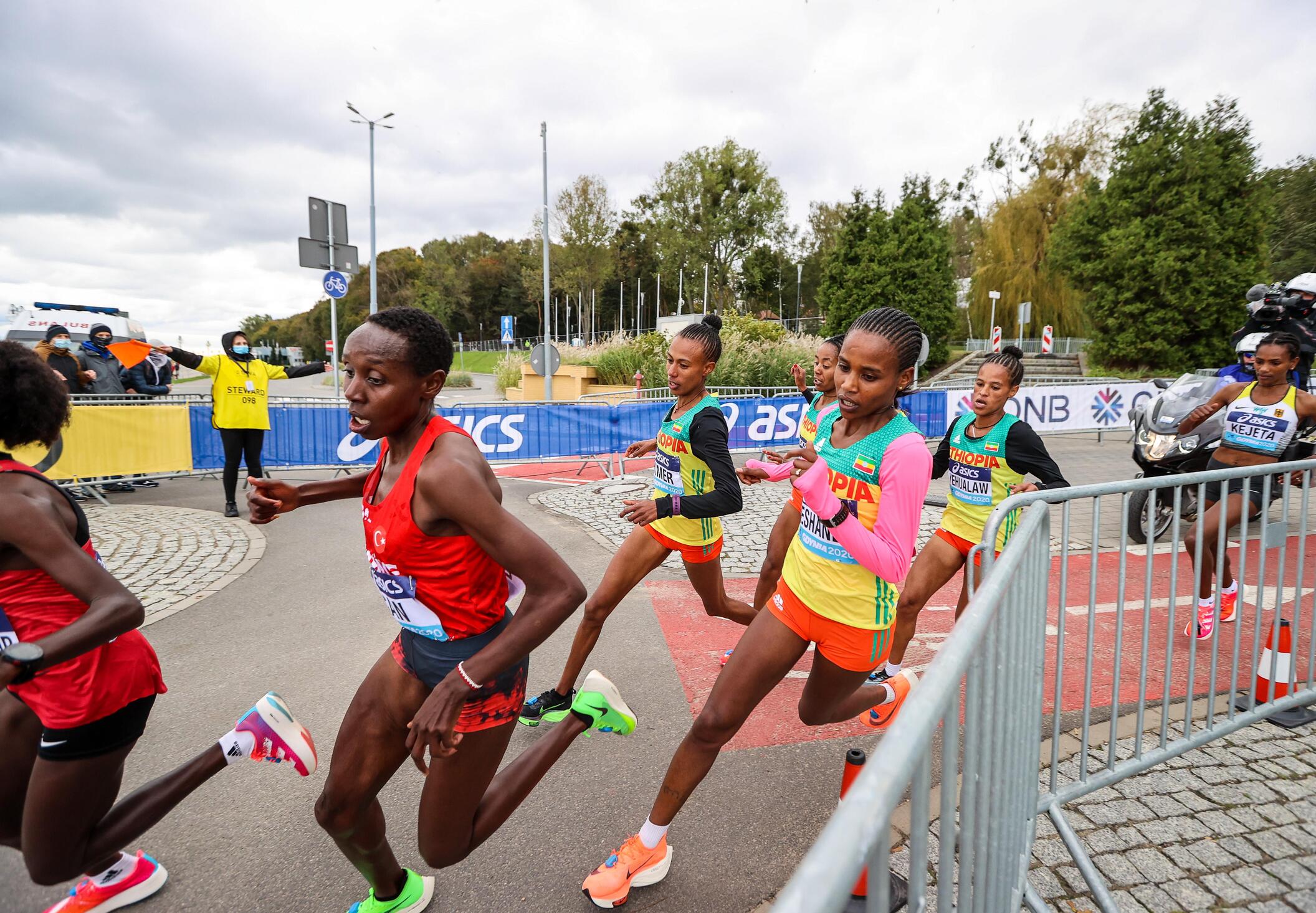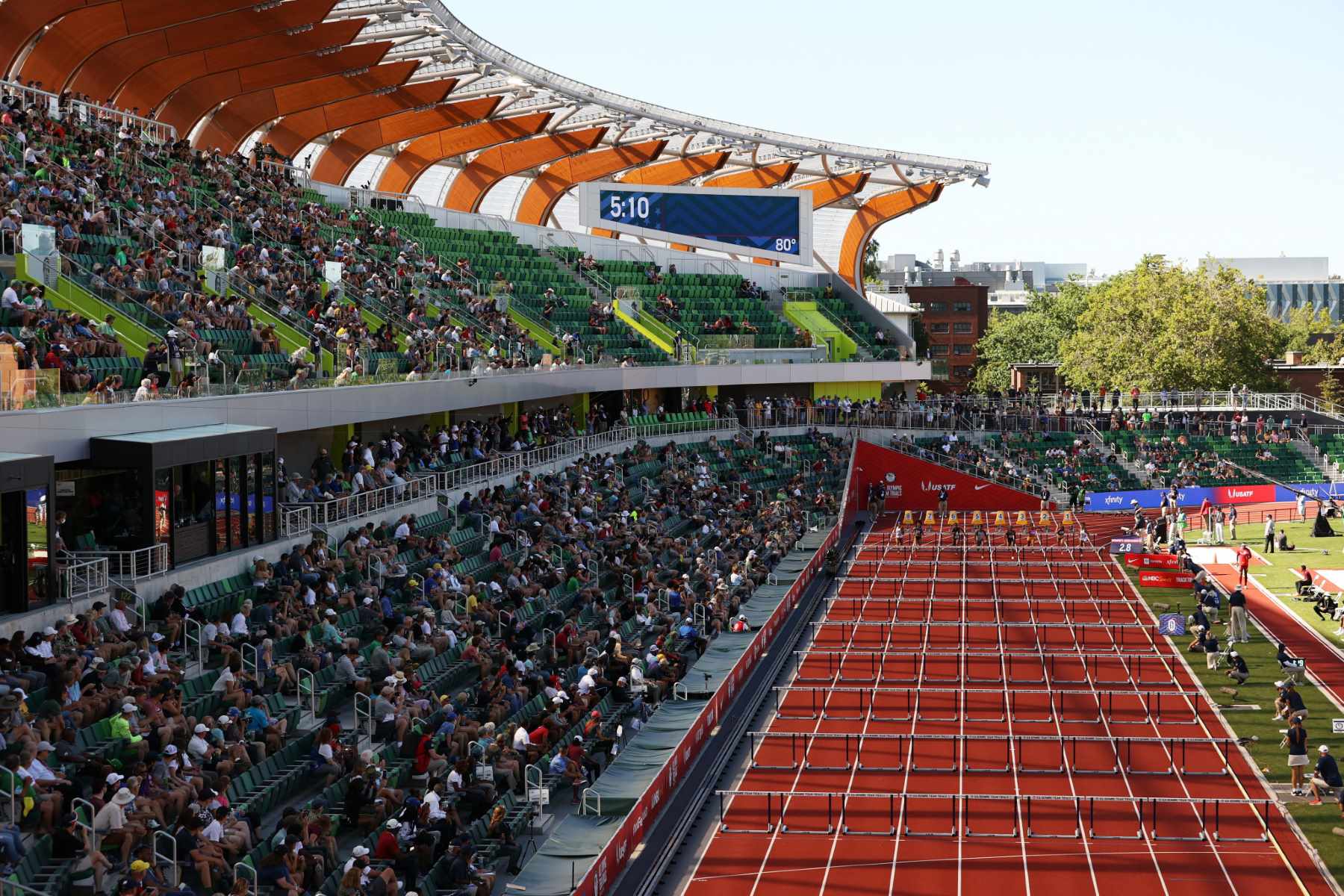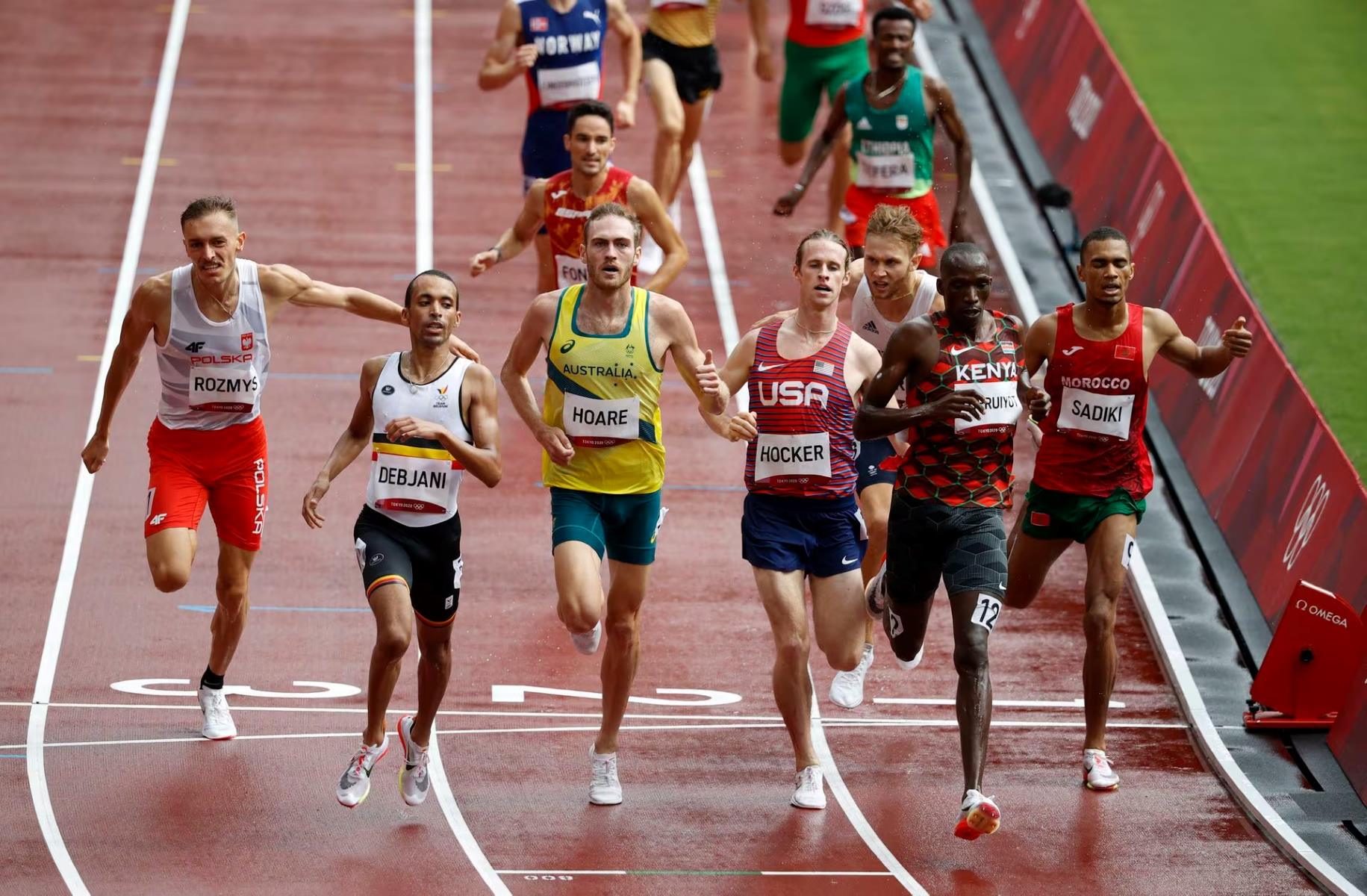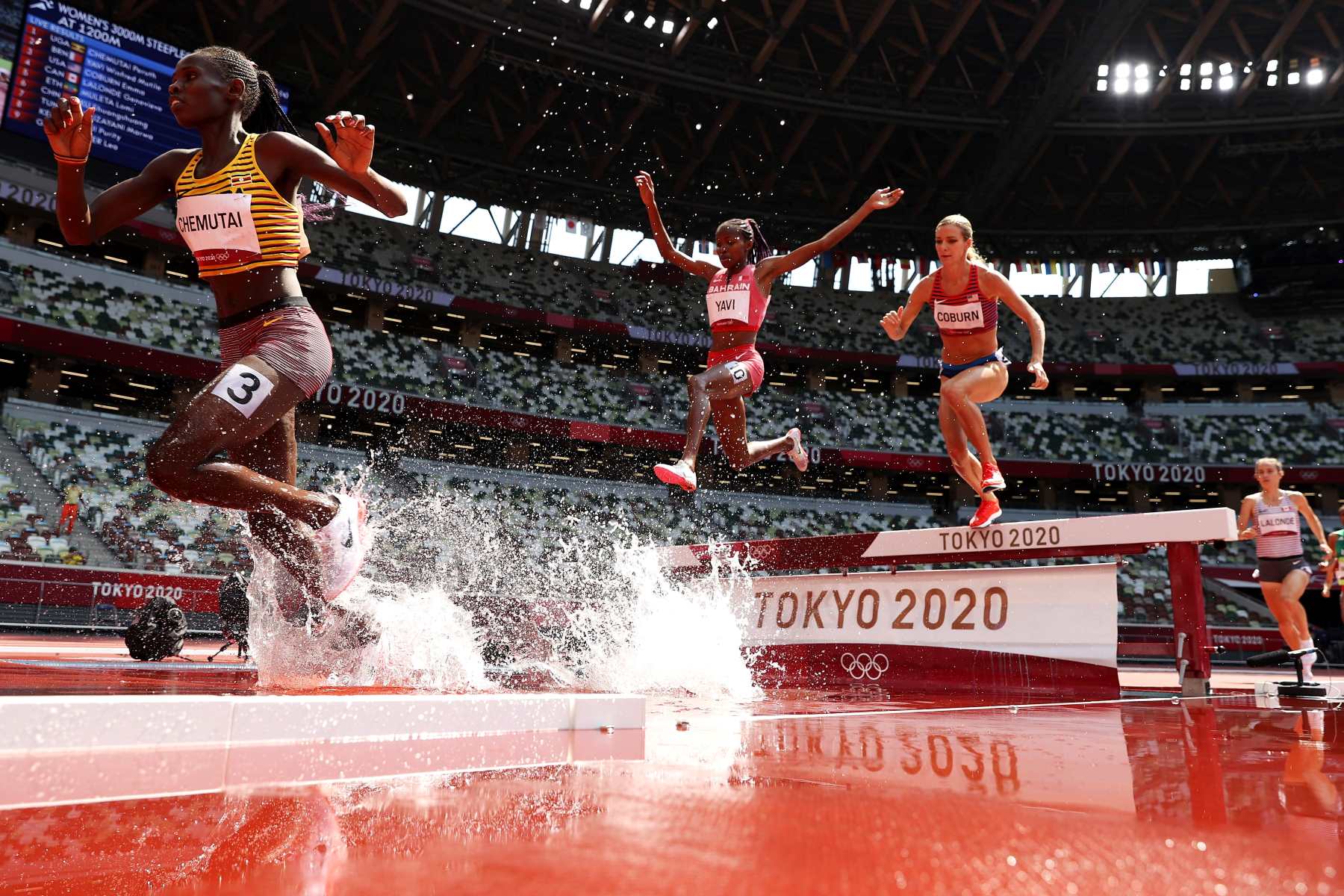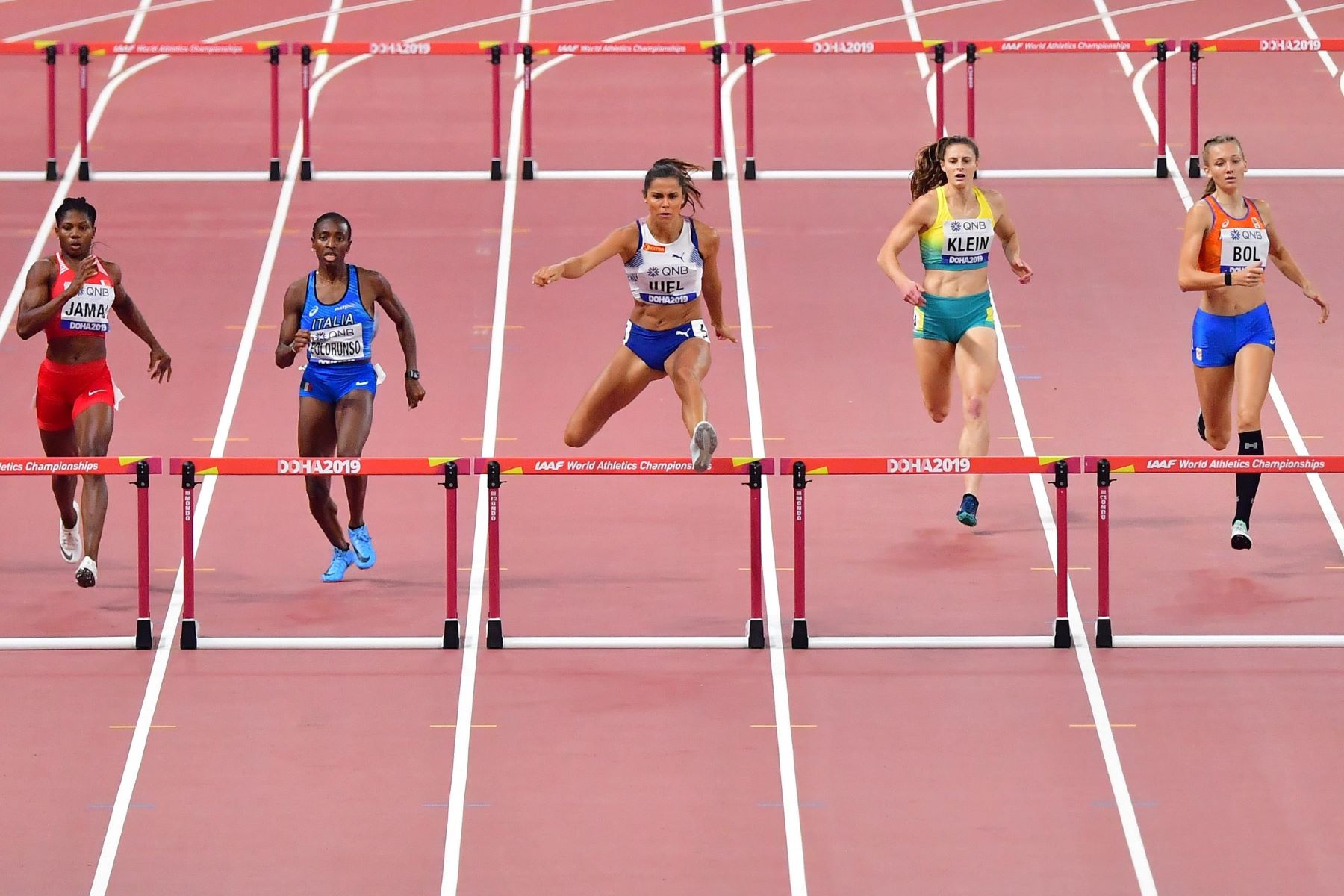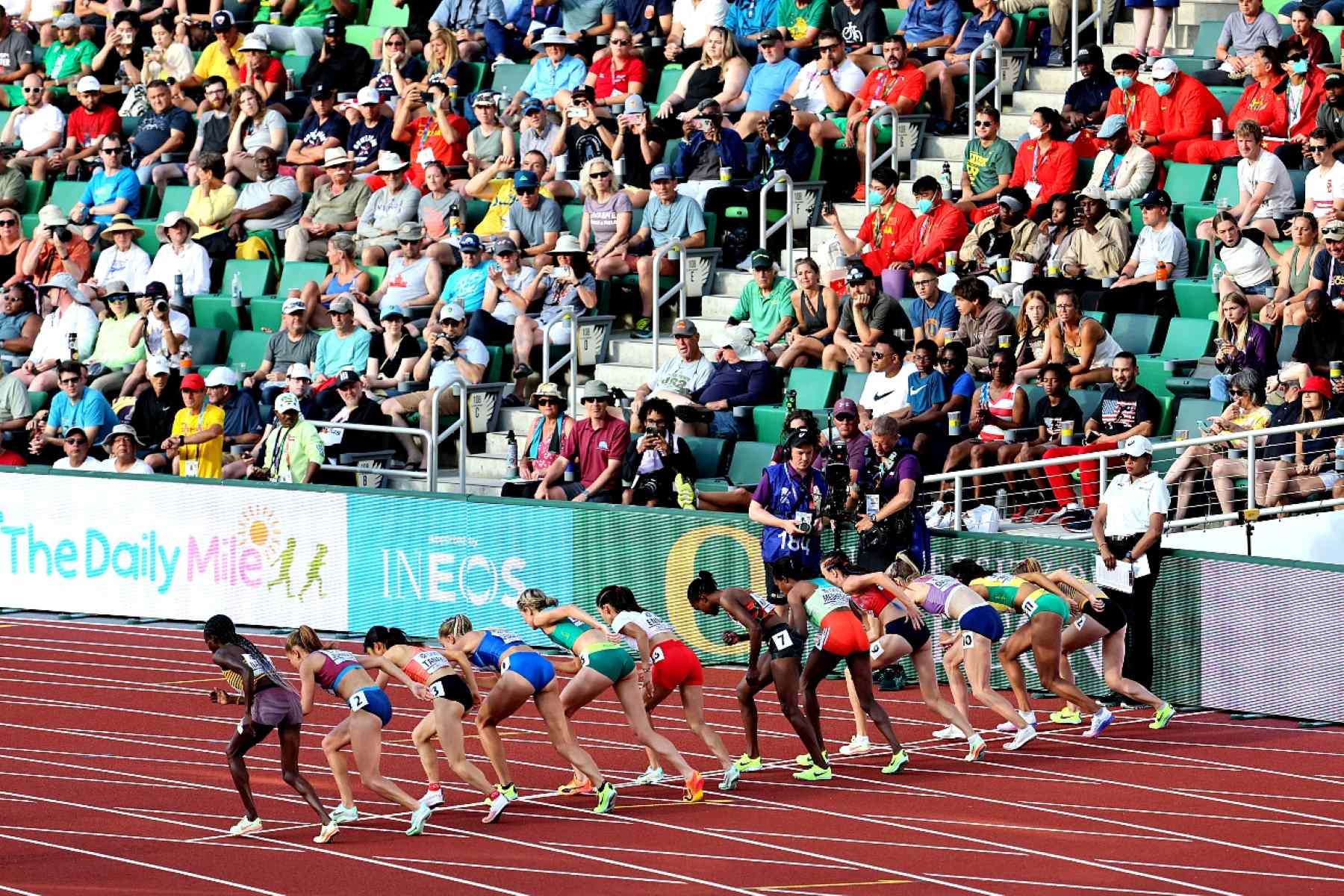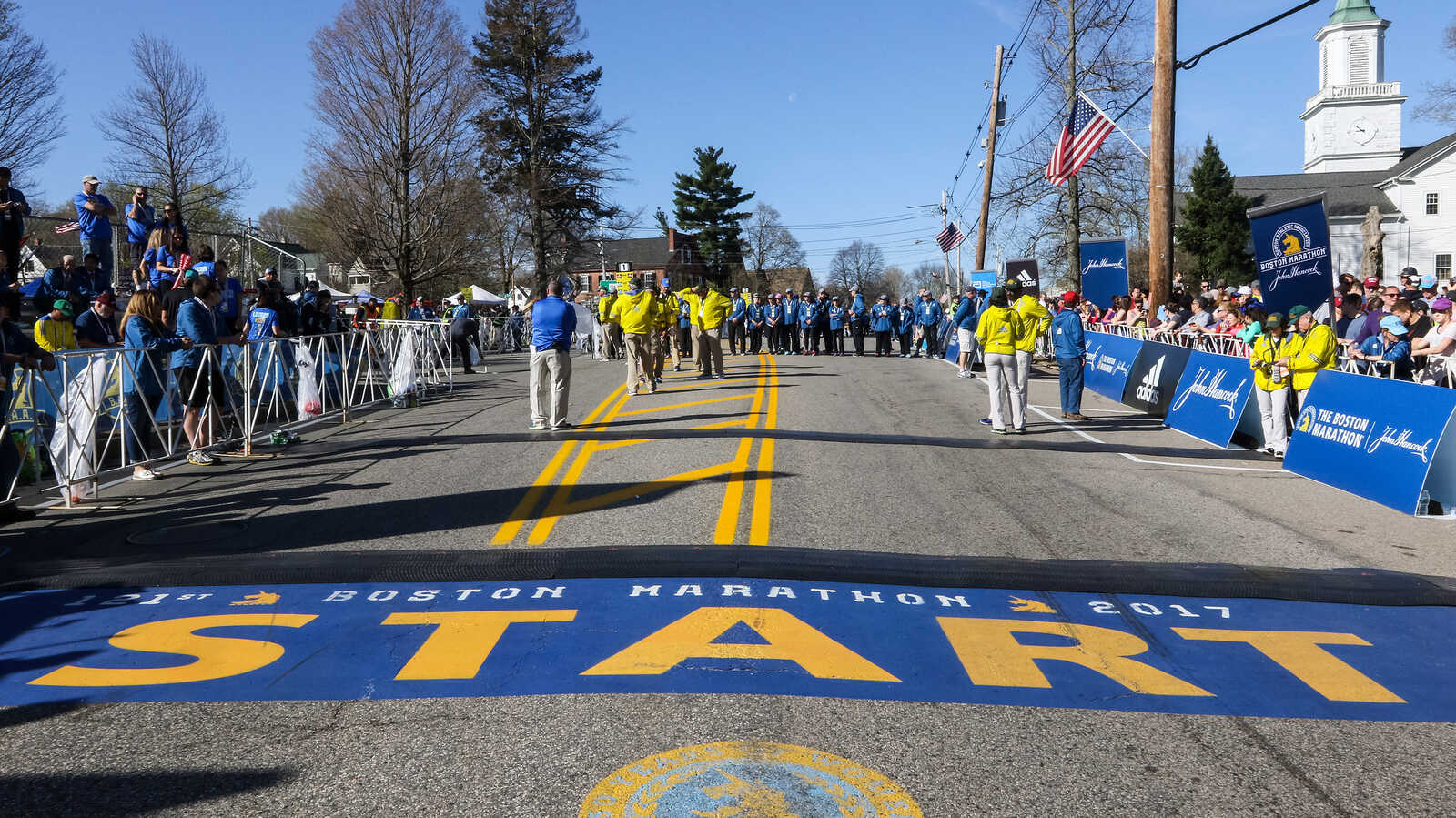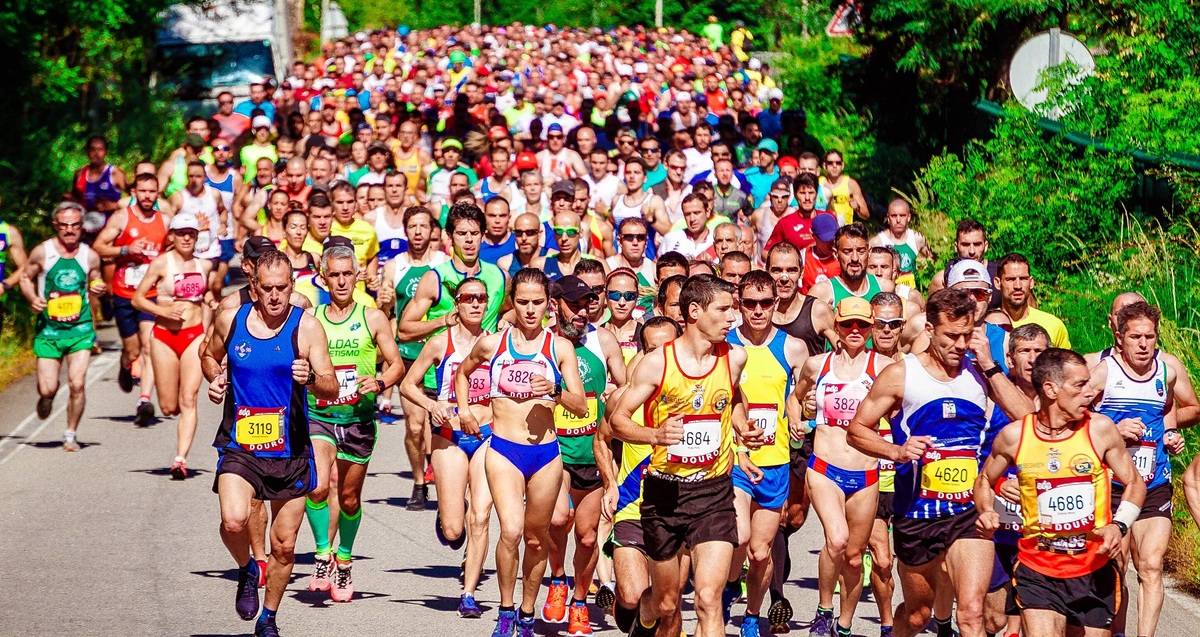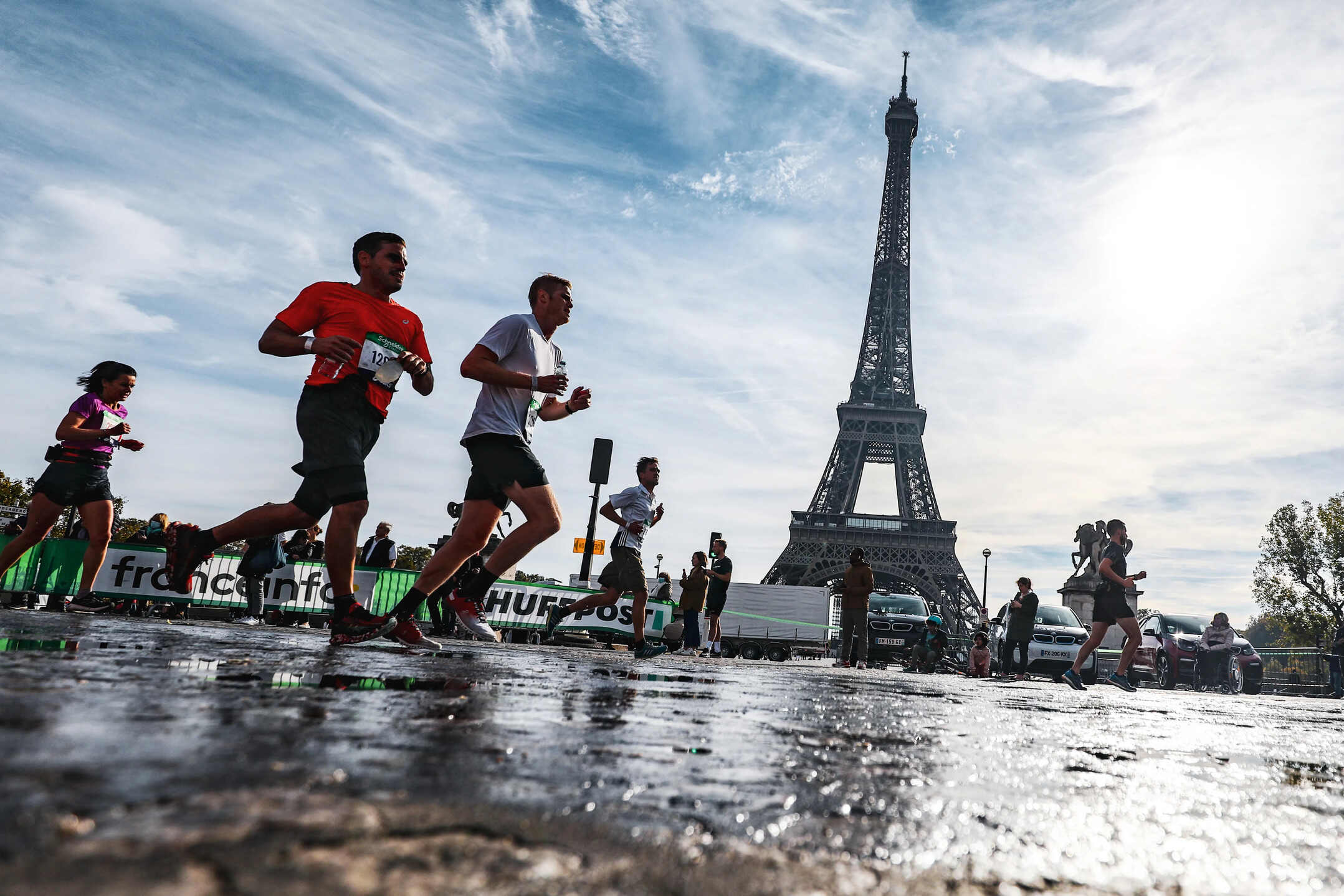

Featured
When Is The Paris Marathon
Modified: October 24, 2023
Get all the details and dates for the featured Paris Marathon event. Plan your trip, train and get ready to run in the most iconic race in the city of love.
Introduction
Welcome to the exhilarating world of the Paris Marathon, one of the most prestigious marathons in the world! Whether you are a seasoned marathon runner or a first-timer seeking a memorable challenge, the Paris Marathon offers an unforgettable experience through the stunning streets of the French capital. This article will guide you through the history, course description, training tips, and everything you need to know to participate in this iconic event.
Since its inception in 1977, the Paris Marathon has grown into a world-renowned event, attracting over 50,000 participants from all corners of the globe. The race not only showcases the beauty of Paris but also provides an opportunity to run alongside famous landmarks such as the Eiffel Tower, Louvre Museum, and Notre-Dame Cathedral.
The Paris Marathon is not just a race; it’s a celebration of human determination, endurance, and a profound sense of accomplishment. Each year, the event brings together elite athletes, enthusiastic amateur runners, and supportive spectators lining the streets, creating an electric atmosphere that fuels participants to push through the 26.2-mile journey with passion and determination.
Participating in the Paris Marathon requires dedication, training, and careful planning. Whether you’re aiming for a personal best or simply want to enjoy the scenic route, the experience will undoubtedly leave an indelible mark on your running journey. So, lace up your running shoes and embark on a remarkable adventure through the heart of Paris!
In the following sections, we will delve into the history of the Paris Marathon, explore the captivating course, offer training tips to help you prepare, provide essential information about the Paris Marathon Expo and registration process, and address common questions you may have. Let’s dive in and discover all you need to know about this incredible marathon!
History of Paris Marathon
The Paris Marathon has a rich history that dates back to its establishment in 1977. Inspired by the success of the New York City Marathon, French journalist Michel Jazy and Athletics Federation President Michel Bernard collaborated to create a marathon that would showcase the beauty and grandeur of Paris.
The inaugural Paris Marathon took place on September 23, 1977, with 4,126 runners participating in the event. The route started and finished at the iconic Champs-Élysées, taking runners through the heart of the city, passing famous landmarks such as the Louvre Museum and Notre-Dame Cathedral.
Over the years, the Paris Marathon grew in popularity, attracting more participants and gaining recognition as one of the six World Marathon Majors. Its status as a World Marathon Major solidified its position among the most prestigious marathons in the world, alongside races in Tokyo, Boston, London, Berlin, and Chicago.
The Paris Marathon holds a special place in the hearts of runners, not only for its stunning backdrop but also for the incredible atmosphere created by enthusiastic crowds and fellow participants. The spirit of camaraderie and support along the route is truly remarkable and adds an extra layer of excitement to the race.
Throughout its history, the Paris Marathon has witnessed remarkable achievements and unforgettable moments. In 2014, Kenya’s Stanley Biwott set a new men’s course record, completing the race in 2 hours, 5 minutes, and 11 seconds. The women’s course record was set in 2018 by Kenya’s Visiline Jepkesho, with an impressive time of 2 hours, 22 minutes, and 55 seconds.
Today, the Paris Marathon continues to attract runners from all over the world, with participants of various skill levels coming together for this extraordinary event. Whether you are aiming for a personal best or simply want to experience the electrifying atmosphere of the Paris Marathon, you will be part of a long and storied tradition that honors the spirit of running and the city of Paris.
In the next sections, we will explore the course description, training tips, and other essential information to help you prepare and make the most of your Paris Marathon experience.
Course Description
The Paris Marathon course is nothing short of spectacular, offering runners an unforgettable journey through the heart of the City of Love. As you lace up your running shoes and step onto the starting line, get ready to be enthralled by the beauty of iconic landmarks, charming neighborhoods, and vibrant streets.
The course starts on the Champs-Élysées, one of the most famous avenues in the world, providing a magnificent backdrop as you begin your marathon adventure. From there, you’ll traverse the city, passing by renowned landmarks such as the Louvre Museum, Place de la Bastille, and the stunning Notre-Dame Cathedral.
As you continue your run, you’ll make your way to the Bois de Vincennes, a peaceful and verdant park perfect for rejuvenation amidst the race. The course then takes you through various districts of Paris, including the Bois de Boulogne, which offers a serene and picturesque landscape.
One of the highlights of the Paris Marathon course is the opportunity to run along the banks of the River Seine. This scenic stretch allows runners to take in the breathtaking views of famous landmarks like the Eiffel Tower, Grand Palais, and Musée d’Orsay.
Throughout the course, you’ll experience the support and encouragement of enthusiastic spectators lining the streets, creating a festive and energetic atmosphere. The cheers from the crowd, the vibrant music, and the shared camaraderie among fellow runners will keep you motivated and push you to cross the finish line with a sense of accomplishment.
The route concludes back at the Champs-Élysées, where you’ll be greeted by a sea of cheering supporters and the iconic Arc de Triomphe. As you sprint towards the finish line, the overwhelming sense of achievement will wash over you, knowing that you’ve conquered the 26.2-mile challenge through one of the world’s most beautiful cities.
It’s important to note that the course is mostly flat, with a few minor inclines and declines. The relatively flat terrain makes it an ideal course for both experienced runners looking to achieve a personal best and beginners seeking a memorable first marathon experience.
Whether you’re a seasoned marathoner or new to long-distance running, the Paris Marathon course offers a unique blend of natural beauty, architectural splendor, and an electric atmosphere that will undoubtedly make for an extraordinary and unforgettable race.
In the next section, we will delve into training tips to help you prepare for the demands of the Paris Marathon and ensure you have a successful and enjoyable race day.
Training for Paris Marathon
Preparing for the Paris Marathon requires dedicated training, proper conditioning, and a structured plan to ensure you are physically and mentally prepared for the 26.2-mile journey ahead. Whether you are a seasoned runner or new to marathon training, following a well-designed training program will help you improve your endurance, build strength, and prevent injuries.
Before diving into your training, it’s essential to assess your current fitness level and consult with a healthcare professional if necessary. They can provide valuable insights and guidance tailored to your specific needs.
A typical training program for a marathon lasts around 16 weeks and consists of a combination of running, cross-training, and rest days. Gradually increasing your mileage and incorporating different types of runs, such as long runs, tempo runs, hill repeats, and recovery runs, will help you build endurance and improve your overall performance.
It’s important to listen to your body and avoid training too hard or too fast, as overtraining can lead to fatigue, burnout, and injuries. Incorporating rest and recovery days into your training plan allows your body to repair and rebuild muscles, reducing the risk of injury and promoting optimal performance.
In addition to running, cross-training activities such as swimming, cycling, strength training, or yoga can help improve your overall fitness and prevent muscle imbalances. These activities also provide variety and can help prevent boredom during your training program.
Proper nutrition and hydration are crucial during your training period. Fueling your body with a balanced diet that includes carbohydrates, proteins, healthy fats, and plenty of fruits and vegetables will provide the energy and nutrients needed for optimal performance. Stay hydrated by drinking water before, during, and after your runs to prevent dehydration.
During your training, it’s beneficial to simulate race conditions by participating in shorter races or organized running events. These events can provide a valuable opportunity to practice pacing, nutrition strategies, and mental preparation.
Maintaining a positive mindset and staying motivated throughout your training is key to your success. Setting realistic goals, finding a supportive running community, and varying your training routes can help keep you engaged and excited about your progress.
Remember to listen to your body and adapt your training program as needed. If you experience pain or discomfort that doesn’t subside with rest, seeking professional advice from a healthcare provider or a sports medicine specialist is crucial to addressing any potential issues before race day.
With consistent training, proper rest, and a positive mindset, you will be well-prepared to conquer the Paris Marathon and cross that finish line with a sense of achievement and pride.
In the next section, we will provide you with valuable tips to ensure a smooth and enjoyable experience on race day.
Tips for Participating in Paris Marathon
Participating in the Paris Marathon is an exciting and memorable experience. To ensure a smooth and enjoyable race day, here are some valuable tips to keep in mind:
- Plan your trip in advance: Make sure to arrange your travel and accommodation well in advance. Paris is a popular tourist destination, and hotel availability can fill up quickly, especially during major events like the marathon. Additionally, familiarize yourself with the city and transportation options to navigate easily on race day.
- Pick up your race bib early: Visit the Paris Marathon Expo to collect your race bib, timing chip, and other important race materials. The expo typically takes place a day or two before the race and offers a chance to explore running-related products, attend informative sessions, and soak in the pre-race atmosphere.
- Stay hydrated and fuel up: Hydration and nutrition are crucial during the race. Make sure to stay well-hydrated in the days leading up to the marathon and drink water and sports drinks along the course. Also, develop a fueling strategy by consuming energy gels, bars, or other easily digestible snacks during the race to maintain energy levels.
- Wear appropriate gear: Choose comfortable running gear and shoes suited to your running style and the weather conditions. It’s advisable to try out your race outfit during your training runs to ensure that it’s comfortable and doesn’t cause any chafing or discomfort.
- Start slow and pace yourself: It’s easy to get caught up in the excitement and adrenaline at the start line, but resist the temptation to sprint off. Begin at a conservative pace and gradually pick up speed as you settle into a comfortable rhythm. Pacing yourself properly will help conserve energy for the later stages of the race.
- Enjoy the scenery and crowd support: Take in the breathtaking views of Paris and embrace the amazing atmosphere created by the spectators along the course. The energy and cheering from the crowd will provide a huge morale boost. Stay present and enjoy every step of the journey.
- Be mentally prepared: Running a marathon requires mental toughness. Prepare yourself mentally by visualizing success, setting achievable goals, and staying positive throughout the race. Break the distance into smaller segments and focus on one mile at a time, celebrating each milestone along the way.
- Listen to your body: Pay attention to any hints of fatigue or discomfort during the race. If needed, take short walking breaks or slow down your pace to prevent burnout. Trust your training and the work you’ve put in to get you to the finish line.
- Celebrate your accomplishment: Crossing the finish line of the Paris Marathon is an incredible achievement. Take a moment to celebrate your hard work, dedication, and the amazing feat you’ve accomplished. Cherish the memories and the sense of accomplishment that will stay with you long after the race.
By following these tips and approaches, you can maximize your experience at the Paris Marathon and create lasting memories. Enjoy the amazing journey and embrace the spirit of this remarkable event!
Paris Marathon Expo
The Paris Marathon Expo is an integral part of the marathon experience, providing runners with the opportunity to immerse themselves in the excitement and energy leading up to the race. This dynamic event takes place a day or two before the marathon and offers a range of activities, exhibits, and informative sessions.
First and foremost, the expo is where participants collect their race bibs, timing chips, and other essential race materials. It’s important to arrive early to avoid long queues and ensure a smooth pick-up process. Along with your bib, you will receive a goody bag filled with sponsored merchandise, running gear samples, and helpful information about the race.
The expo showcases an extensive array of exhibitors, including major sports brands, running gear manufacturers, nutrition companies, and fitness organizations. These exhibitors offer a wide selection of products, from running shoes and apparel to energy gels, hydration packs, and other race essentials. It’s an excellent opportunity to explore the latest innovations in running and discover gear that can enhance your performance on race day.
In addition to the exhibitors, the Paris Marathon Expo hosts various informative sessions and workshops on topics such as race strategy, injury prevention, nutrition for endurance athletes, and more. Seasoned professionals and experts in the field share their knowledge, tips, and insights that can benefit runners of all skill levels.
Visiting the expo is not only about collecting race materials and browsing exhibitor booths; it’s also about immersing yourself in the vibrant atmosphere created by fellow runners. The buzz of excitement and anticipation is palpable as participants from around the world come together, sharing their stories, experiences, and motivating each other for the upcoming race. It’s a chance to connect with like-minded individuals, form new friendships, and become part of the global running community.
Make the most of your time at the expo by planning ahead. Research the exhibitors you want to visit, note down the sessions you want to attend, and create a schedule that allows you to navigate the expo efficiently without feeling overwhelmed. Wear comfortable shoes and clothing, as you may spend a significant amount of time on your feet exploring the exhibits.
It’s also worth mentioning that some exhibitors offer special discounts and promotions exclusively at the expo, making it a perfect opportunity to snag some deals and stock up on race essentials or new running gear.
The Paris Marathon Expo is an exciting prelude to the main event, providing runners with valuable resources, useful information, and a sense of anticipation for the marathon. Enjoy the lively atmosphere, make new connections, and soak in the contagious energy that will inspire you as you prepare for your participation in the Paris Marathon.
Paris Marathon Registration
Registering for the Paris Marathon is your first step towards embarking on an incredible running adventure through the heart of the French capital. The marathon typically opens for registration several months in advance, and securing your spot early is essential due to the event’s popularity.
To register for the Paris Marathon, you’ll need to visit the official marathon website. There, you’ll find all the information you need, including registration dates, fees, and any specific requirements. The registration process is usually done online and is straightforward to complete.
Before starting the registration process, ensure you have the necessary information readily available. This typically includes personal details such as your full name, date of birth, contact information, and emergency contact information. You may also be required to provide proof of previous race times or membership in a running club, depending on the registration policies.
During the registration process, you may be asked to select a desired start area based on your projected finish time. The start areas are divided into different waves to ensure a smooth flow of runners at the beginning of the race. Selecting the appropriate start area will help ensure you have a comfortable running experience alongside runners of similar pace.
It’s important to note that the Paris Marathon has a limited number of participant slots available due to logistical constraints. Once the registration reaches capacity, no further entries will be accepted. Therefore, it’s advisable to register as soon as the registration period opens to secure your spot.
As with many marathons, the Paris Marathon registration fee varies depending on factors such as the registration period and your nationality. The fee typically covers your participation in the race, access to aid stations along the course, a race bib with timing chip, a finisher’s medal, and other race-related amenities. Additional items such as race merchandise may be available for purchase separately.
Once you have successfully registered and paid the registration fee, you will receive a confirmation email with further instructions, including details on how to collect your race bib and other race materials at the Paris Marathon Expo. It’s important to carefully read and follow these instructions to ensure a smooth process on race day.
Keep in mind that the registration fee is non-refundable, and the Paris Marathon typically does not allow deferrals or transfers to other participants. Therefore, it’s essential to commit to your participation and ensure you are able to travel to Paris on the scheduled race day.
Registering for the Paris Marathon is an exciting moment that sets your journey in motion. Make sure to mark the registration dates on your calendar and be prompt in securing your spot to avoid disappointment. Embrace the anticipation and start preparing for an unforgettable experience at one of the world’s most prestigious marathons.
Paris Marathon Date
The Paris Marathon, an eagerly anticipated event for avid runners and enthusiasts, takes place annually in the springtime. The exact date of the Paris Marathon varies from year to year, but it typically falls on a Sunday in April.
The marathon organizers meticulously plan the race date to ensure optimal running conditions and to coincide with the charming atmosphere of spring in Paris. The mild weather and blooming scenery create a picturesque backdrop for the runners as they navigate the course through the city’s iconic streets and landmarks.
It’s essential to stay updated with the official Paris Marathon website and social media channels to be informed about the specific race date for the year you plan to participate. The race organizers usually announce the date well in advance, allowing runners sufficient time to prepare and make necessary travel arrangements.
The Paris Marathon typically starts in the morning, with wave-based start times that stagger the participants to avoid overcrowding at the beginning of the race. The exact start time can vary slightly from year to year, but it’s important for runners to arrive early to the designated start area to ensure a smooth start to their marathon journey.
Maintaining a consistent training schedule and making necessary travel arrangements ahead of time can help ensure that you are adequately prepared for the Paris Marathon on its designated date. It’s also important to consider jet lag if you are traveling to Paris from a different time zone, allowing yourself ample time to adjust and recover before race day.
The Paris Marathon date not only marks a significant day for the runners but also represents a festive atmosphere throughout the city. The race day buzz permeates the streets as spectators gather to cheer on participants and create an electrifying atmosphere that amplifies the runners’ motivation and enthusiasm.
Participating in the Paris Marathon on its designated date offers a unique opportunity to be part of a global celebration of running in the heart of one of the world’s most beautiful and culturally rich cities. It’s a chance to test your fitness, push your limits, and create lasting memories as you conquer the incredible 26.2-mile journey through the streets of Paris.
So mark your calendar, get ready to lace up your running shoes, and prepare for an extraordinary experience on the designated date of the Paris Marathon. It’s time to immerse yourself in the beauty, culture, and spirit of this iconic race.
Paris Marathon Start Time
The start time of the Paris Marathon is an important detail for participants to be aware of to ensure a smooth and successful race day experience. The start time for the marathon is typically in the morning, allowing runners to embark on their 26.2-mile journey through the streets of Paris and take advantage of the optimal weather conditions.
While the exact start time can vary slightly from year to year, the organizers typically aim to begin the race between 8:00 AM and 9:30 AM local time. This range allows for wave-based starts, where participants are divided into different groups, each starting at a designated time.
The wave-based start system helps manage the flow of runners and prevents overcrowding at the beginning of the race. Participants are typically assigned to different starting areas based on their projected finish times, ensuring that runners of similar pace begin together.
It’s crucial to arrive at the designated start area well before the start time to allow ample time for check-in, using the facilities, and warming up. The specific instructions for start time and location will be provided in the pre-race communications and race materials.
As the start time approaches, the anticipation and excitement build among the participants. The atmosphere at the starting line is electric, with a combination of nerves, determination, and a shared sense of achievement. The crowd buzzes with energy as runners prepare to set off on their personal marathon journey.
Once the starting gun fires, the participants begin their run through the stunning streets of Paris. The start of the Paris Marathon is typically accompanied by cheers from the enthusiastic spectators lining the route, providing an extra boost of motivation and support to the runners as they set off towards their marathon goals.
Adhering to the designated start time is crucial to ensure a smooth flow of the race and to avoid any delays or complications. It’s advisable to plan your travel and logistics in advance to account for any unforeseen circumstances that could affect your arrival at the start area.
Remember, the start time of the Paris Marathon may vary slightly each year, so it’s important to stay updated with the official race communications and website to be informed of the exact start time for the marathon you plan to participate in.
So, set your alarm, double-check the start time, and get ready to kick off your Paris Marathon journey at the designated time. Be prepared to embrace the excitement, push through the nerves, and embark on an incredible adventure through the streets of Paris.
Paris Marathon Finish Line
The Paris Marathon finish line is the ultimate destination and a culmination of the 26.2-mile journey through the beautiful streets of the French capital. Crossing the finish line is an incredible achievement and a momentous occasion for every participant.
The finish line of the Paris Marathon is located back where the race started, on the iconic Champs-Élysées. The wide and grand boulevard provides a majestic backdrop as runners approach the culmination of their marathon quest.
As you near the finish line, the energy and excitement grow exponentially. The cheering from the crowd, the vibrant music, and the support of fellow runners spur you on, igniting that final burst of energy to sprint towards the finish line with all your might.
As you cross the finish line, your accomplishment is celebrated and acknowledged. Volunteers and race officials are present to direct you towards the post-finish line area, where the festive atmosphere continues.
Here, you will receive your well-deserved finisher’s medal—a prized symbol of your achievement in completing the Paris Marathon. Take a moment to savor the overwhelming sense of accomplishment, reflecting on the months of training, dedication, and perseverance that got you to this point.
Following the finish line, there will be medical professionals and volunteers available to provide any necessary support or assistance you may require. Hydration stations and refreshments are also provided to help replenish your energy and rehydrate your body after the demanding race.
After reuniting with friends, family, or fellow runners, take the opportunity to capture the moment with photos or connect with others who have experienced the marathon journey alongside you. The finish area is filled with a sense of elation and camaraderie, as runners from all walks of life come together to celebrate their accomplishment.
The Paris Marathon finish line is not just an endpoint, but rather a gateway to a new chapter in your running journey. It’s a moment to reflect on your accomplishment, set new goals, and embrace the life-changing experience you have just completed.
After crossing the finish line, take the time to rest, recover, and revel in the achievement. Cherish the memories, celebrate with loved ones, and be proud of your remarkable feat in conquering the Paris Marathon.
The finish line of the Paris Marathon represents the culmination of your hard work, dedication, and determination. It’s an extraordinary moment that will be etched in your memory forever. Congratulations on reaching this milestone, and may your future running endeavors continue to be filled with success, joy, and the same sense of accomplishment.
Paris Marathon Route Map
The Paris Marathon route takes participants on a mesmerizing journey through the enchanting streets of the French capital, showcasing some of the city’s most iconic landmarks and beautiful neighborhoods. As you embark on your 26.2-mile adventure, it’s helpful to familiarize yourself with the route map to get a sense of the course you’ll be running.
The marathon begins on the magnificent Champs-Élysées, offering runners a picturesque starting point. From there, participants will make their way through the heart of Paris, passing by renowned landmarks that have shaped the city’s history and culture.
As you traverse the course, you’ll navigate through districts such as Place de la Bastille, known for its vibrant atmosphere and historic significance. The charming neighborhoods of Nation, Vincennes, and Les Tuileries will greet you along the way, each adding its unique charm to the marathon experience.
One of the highlights of the Paris Marathon is the opportunity to run alongside the River Seine. This scenic stretch offers breathtaking views of iconic landmarks such as the Eiffel Tower, Grand Palais, and Musée d’Orsay. It’s a truly unforgettable part of the course that encapsulates the beauty and grandeur of Paris.
Participants will also have the chance to run through two stunning parks – the Bois de Vincennes and the Bois de Boulogne. These green spaces provide peaceful and picturesque surroundings, allowing runners to immerse themselves in nature and temporarily escape the bustling city streets.
Throughout the course, you’ll experience the support of enthusiastic spectators who line the streets, creating an electric atmosphere and cheering you on every step of the way. Their energy and encouragement will provide an invaluable boost to keep you motivated and determined as you conquer the Paris Marathon.
For a more detailed understanding of the Paris Marathon route, it’s recommended to review the official route map provided by the marathon organizers. The map will highlight specific streets, turns, and key landmarks along the course, allowing you to plan your race strategy and anticipate the exciting moments that lie ahead.
Remember to stay focused during the race and follow the marked signs and route directions provided by race officials. The route map will serve as a helpful reference, but it’s essential to pay attention to on-course signage and the guidance of race volunteers to stay on track.
Embrace the opportunity to run alongside some of the world’s most iconic landmarks and immerse yourself in the vibrant atmosphere of the Paris Marathon course. With the route map as your guide, you’ll be well-prepared to navigate the streets of Paris and conquer this incredible marathon experience.
Paris Marathon FAQs
As one of the most prestigious marathons in the world, the Paris Marathon garners a lot of interest from participants. Here are some frequently asked questions to provide you with helpful information and address any concerns you may have:
- How do I register for the Paris Marathon?
Registration for the Paris Marathon typically opens several months before the event. Visit the official marathon website to find registration details, dates, and fees. The process is typically done online and requires personal information and payment. - What is the time limit for finishing the marathon?
The Paris Marathon has a time limit of 6 hours and 40 minutes. It’s important to maintain a pace that will allow you to complete the race within this time frame to ensure an official finish. - Is there a minimum age requirement to participate in the Paris Marathon?
Yes, the minimum age requirement for participating in the Paris Marathon is 18 years old on race day. Participants must provide proof of age during the registration process. - Can I use headphones during the marathon?
Yes, you are permitted to use headphones during the Paris Marathon. However, it’s important to be aware of your surroundings and prioritize your safety. Lower the volume or keep one earbud out to remain attentive to race officials, volunteers, and other participants. - Are there aid stations along the course?
Yes, the Paris Marathon provides aid stations at regular intervals along the course. These stations offer water, sports drinks, energy gels, and sometimes food to keep participants hydrated and fueled throughout the race. - Is bag storage available for participants?
Yes, bag storage facilities are available near the start line of the marathon. Participants can securely store their belongings using the provided bib number or a bag provided by race organizers. Be sure to check the race guide for specific instructions and any size restrictions. - Can I run the Paris Marathon for charity?
Yes, many participants choose to run the Paris Marathon as part of a charity fundraising effort. Several charity organizations offer official entries and support for participants. Check the marathon website for information on affiliated charities or consider contacting your preferred charity directly. - What is the best way to travel to Paris for the marathon?
Paris has excellent transportation options, including airports, train stations, and a well-connected public transportation system. Consider arriving a few days before the marathon to acclimate to the time zone and explore the city. Plan your travel in advance to ensure a smooth journey. - What happens if I can’t finish the race?
If you are unable to complete the Paris Marathon, race officials and volunteers will be available to assist you. They will provide transportation back to the finish area or first aid services, if needed. There is no penalty for not finishing the race, and you should prioritize your well-being above all else.
These are just a few commonly asked questions about the Paris Marathon. If you have more specific inquiries or concerns, it’s best to consult the official marathon website or reach out to the marathon organizers directly for accurate and up-to-date information.
Remember to review the race guide and any pre-race communications provided by the marathon organizers to ensure you have a comprehensive understanding of the event and are well-prepared for this incredible running experience.
Conclusion
The Paris Marathon is an extraordinary event that combines the exhilaration of running with the enchantment of one of the world’s most beautiful cities. From its rich history and captivating course to the training tips and race day experience, participating in the Paris Marathon is a true bucket-list-worthy adventure.
As you prepare for this remarkable marathon, remember to dedicate time to training and conditioning your body to handle the demands of the 26.2-mile journey. Create a training plan, stay hydrated, fuel your body with proper nutrition, and listen to your body to prevent injuries and optimize your performance.
On race day, embrace the energy and excitement as you join thousands of fellow runners from around the world, traversing the iconic streets of Paris. Take in the breathtaking views of famous landmarks, enjoy the support of enthusiastic spectators, and relish the sense of achievement as you cross the finish line.
Before the marathon, be sure to visit the Paris Marathon Expo, where you can collect your race materials, explore exhibitor booths, and gain valuable insights from informative sessions. It’s also an opportunity to connect with other runners and immerse yourself in the pre-race atmosphere.
During the marathon, the beauty of Paris will surround you as you run past legendary landmarks, picturesque parks, and vibrant neighborhoods. Stay present, pace yourself, and draw inspiration from the remarkable scenery and the camaraderie of your fellow runners.
If you have any questions or concerns, check the official marathon website for detailed information and FAQs. The organizers are there to support you along your marathon journey and ensure you have the best possible experience.
As you reflect on your participation in the Paris Marathon, remember the unforgettable memories you’ve created, the challenges you’ve overcome, and the personal growth you’ve experienced. The Paris Marathon is more than just a race; it’s an opportunity to push your limits, celebrate your accomplishments, and embrace the joy of running.
So, lace up your shoes, prepare for an extraordinary adventure, and make your mark in the history of the Paris Marathon. Embrace the spirit of this iconic race and enjoy every step of your journey through the beautiful streets of Paris.
